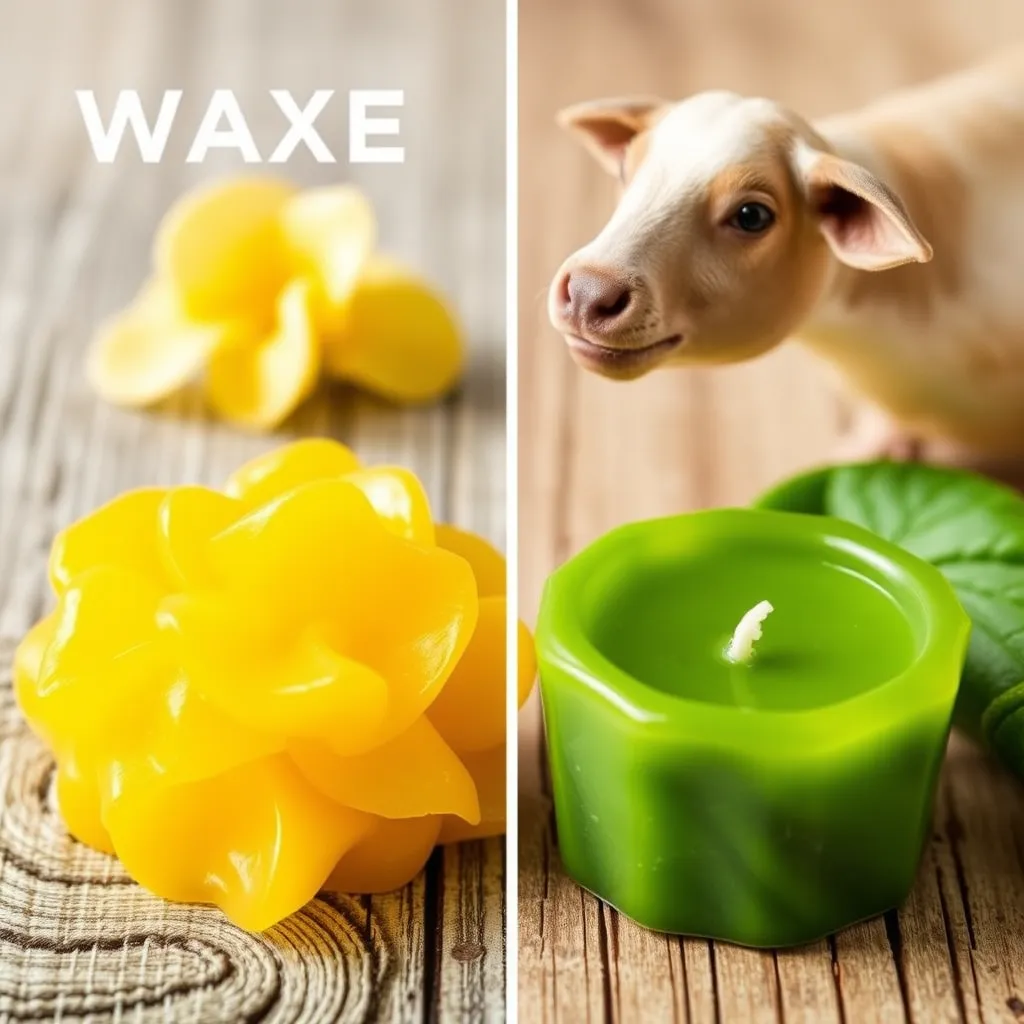Waxes are widely used in various industries, including cosmetics, food, and candles. They can be derived from both plant and animal sources. This article provides a detailed comparison of plant-based and animal-based waxes, exploring their properties, applications, and environmental impacts.

1. Overview of Waxes
Waxes are a diverse group of organic compounds that are hydrophobic (water-repellent) and malleable at moderate temperatures. They are typically composed of long-chain fatty acids and alcohols. Waxes can be categorized into two main types based on their origin:
- Plant-Based Waxes: Derived from plants, such as carnauba wax, soy wax, and candelilla wax.
- Animal-Based Waxes: Derived from animals, such as beeswax, lanolin, and shellac.
2. Properties of Plant-Based Waxes
Plant-based waxes are extracted from various parts of plants, including leaves, stems, and seeds. They are known for their natural origins and are often considered more sustainable than animal-based waxes. Here are some key properties:
- Carnauba Wax: Sourced from the leaves of the carnauba palm, it is hard, durable, and has a high melting point. It is often used in car polishes, cosmetics, and food coatings.
- Soy Wax: Made from soybean oil, it is biodegradable and burns cleaner than paraffin wax. It is commonly used in candles.
- Candelilla Wax: Derived from the candelilla shrub, it is a vegan alternative to beeswax and is used in cosmetics, food, and pharmaceuticals.
3. Properties of Animal-Based Waxes
Animal-based waxes are derived from the secretion or byproducts of animals. They are valued for their unique properties and have been used for centuries in various applications. Here are some examples:
- Beeswax: Produced by honeybees, it is a natural emulsifier with a pleasant aroma. It is used in candles, cosmetics, and wood polishes.
- Lanolin: Extracted from sheep’s wool, it is a moisturizing agent used in skincare products and pharmaceuticals.
- Shellac: Derived from the lac beetle, it is used as a wood finish and in food glazes.
4. Comparison of Plant-Based and Animal-Based Waxes
The following table provides a side-by-side comparison of plant-based and animal-based waxes based on various criteria:
| Criteria | Plant-Based Waxes | Animal-Based Waxes |
|---|---|---|
| Source | Plants (e.g., leaves, seeds) | Animals (e.g., bees, sheep) |
| Melting Point | Varies (e.g., carnauba wax: 78-85°C) | Varies (e.g., beeswax: 62-64°C) |
| Sustainability | Generally more sustainable | Less sustainable due to animal sourcing |
| Biodegradability | Often biodegradable | Usually biodegradable |
| Applications | Candles, cosmetics, food coatings | Candles, cosmetics, pharmaceuticals |
| Cost | Generally lower cost | Often higher cost |
5. Environmental Impact
The environmental impact of waxes depends on their sourcing and production methods. Plant-based waxes are generally considered more environmentally friendly because they are renewable and biodegradable. However, the cultivation of some plants (e.g., palm oil for carnauba wax) can lead to deforestation and habitat loss.
Animal-based waxes, while biodegradable, raise ethical concerns regarding animal welfare. Additionally, the production of animal-based waxes often involves more resource-intensive processes, such as beekeeping for beeswax or raising sheep for lanolin.
6. Conclusion
Both plant-based and animal-based waxes have their unique properties and applications. Plant-based waxes are often favored for their sustainability and lower environmental impact, while animal-based waxes are valued for their traditional uses and unique properties. The choice between the two depends on the specific application, ethical considerations, and environmental priorities.